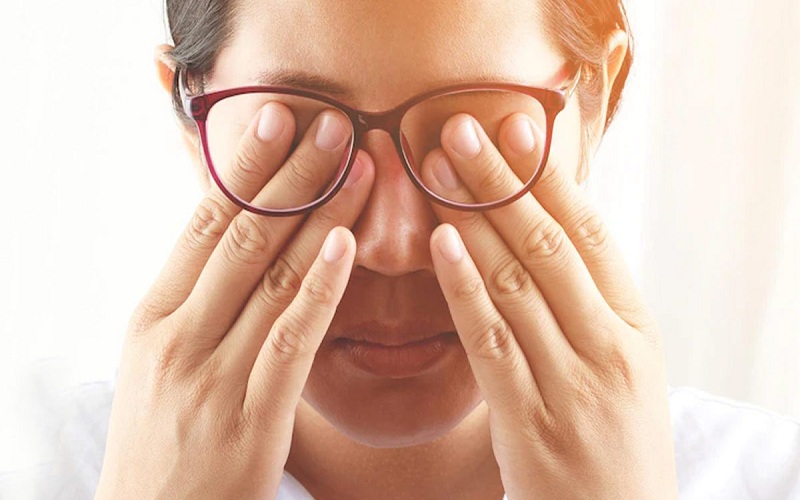The Reasons and Signs of Winter Eye Problems

As the winter chill sets in, individuals often find themselves bundled up against the cold, with a focus on protecting their skin from the harsh elements. However, it is crucial not to overlook the potential impact of winter on our eyes, and eye problems symptoms at that as well. The colder months bring about a unique set of challenges for ocular health, often manifesting as various eye problems. In this comprehensive guide, we will explore the reasons and signs of winter eye problems, shedding light on the common issues individuals may encounter and offering insights into effective management strategies.
Good ophthalmologic care is something that is absolutely essential when it comes to keeping something like dry eyes in winter symptoms at bay. Visit a good hospital in Lucknow to embrace and enhance your eye health like never before.
Understanding Winter Eye Problems:
Dry Eyes:
Among the most prevalent winter eye problems is the onset or exacerbation of dry eyes in winter symptoms. Dry eye issues occur when there is an imbalance in the production of tears or when tears evaporate too quickly. Winter’s cold and dry air can contribute significantly to this condition, causing discomfort and irritation.Dry eyes in winter symptoms often include a gritty sensation, redness, excessive tearing (as a response to dryness), and blurred vision. It’s essential to recognize these signs promptly and seek professional advice to prevent any potential eye problems and complications.
Environmental Factors:
Winter introduces a unique set of environmental conditions that can contribute to eye problems. Indoor heating systems, although essential for warmth, can lead to reduced humidity levels. Low humidity, combined with cold outdoor air, creates an environment where tears evaporate rapidly, leading to dry eyes beside other eye issues.Furthermore, exposure to ultraviolet (UV) rays remains a concern even in winter. The reflective nature of snow can intensify UV exposure, increasing the risk of conditions such as snow blindness. This underscores the importance of wearing UV-protective sunglasses during winter outdoor activities.
Reduced Blinking Rate:
Cold temperatures often prompt individuals to blink less frequently, as a natural response to the chilly air. Reduced blinking can lead to an inadequate distribution of tears across the ocular surface, contributing to dry eyes and other eye problems.
Signs of Winter Eye Problems:
Irritation and Redness:
One of the early eye problems symptoms is persistent irritation and redness. Dry eyes often present with a scratchy or burning sensation, accompanied by a noticeable redness in the whites of the eyes. These symptoms can affect the overall comfort of the eyes and may signal the need for intervention. A good hospital in Lucknow with great ophthalmological support is something you must opt for.
Blurred Vision:
Winter dryness can lead to fluctuations in vision and pose eye problems symptoms, causing temporary blurriness. This phenomenon is typically due to an uneven tear film on the eye’s surface, resulting in distorted visual acuity. If blurred vision persists or worsens, it is crucial to consult with an eye care professional promptly.
Increased Sensitivity to Light:
Dry eyes, a common winter woe, can make the eyes more sensitive to light. Individuals may experience discomfort or pain when exposed to bright lights, both indoors and outdoors. This heightened sensitivity to light, known as photophobia, can impact daily activities, and to that end, such eye problems and eye issues must be tackled rapidly.
Foreign Body Sensation:
Winter eye problems often manifest as a feeling of having a foreign body, such as grit or sand, in the eyes. This sensation is attributed to the inadequate lubrication of the ocular surface and can lead to further irritation if left unaddressed.
Management Strategies:
Artificial Tears and Lubricating Eye Drops:
The use of artificial tears and lubricating eye drops is a primary and effective strategy for managing dry eyes in winter. These products help restore moisture to the eyes, providing relief from discomfort and reducing the risk of related eye issues.
Hydration and Nutrition:
Staying well-hydrated is crucial for maintaining overall health, including ocular health. In winter, when indoor heating can contribute to dehydration, it becomes even more essential to prioritize fluid intake. Additionally, incorporating omega-3 fatty acids into the diet, found in fish and flaxseed, can support tear production and alleviate eye problems.
Blinking Exercises:
Combatting the reduced blinking rate in cold temperatures can be achieved through conscious blinking exercises. Taking breaks during screen time to blink slowly and deliberately helps distribute tears evenly across the eyes, promoting ocular comfort.
Humidifiers:
Countering the drying effects of indoor heating can be achieved by using humidifiers. Increasing humidity levels in indoor spaces helps prevent excessive evaporation of tears, reducing the risk of dry eyes and other eye issues.
Conclusion:
As winter descends upon us, it’s imperative to be mindful of the potential impact on our ocular health. Recognizing the signs of winter eye problems and adopting proactive management strategies can go a long way in ensuring optimal eye comfort and preventing complications. By staying informed and seeking timely professional advice, individuals can navigate the winter season with clear vision and healthy eyes.
A super-speciality hospital in Lucknow would be well-placed to tackle eye issues in a safe and effective manner, thereby prioritizing eye health.






